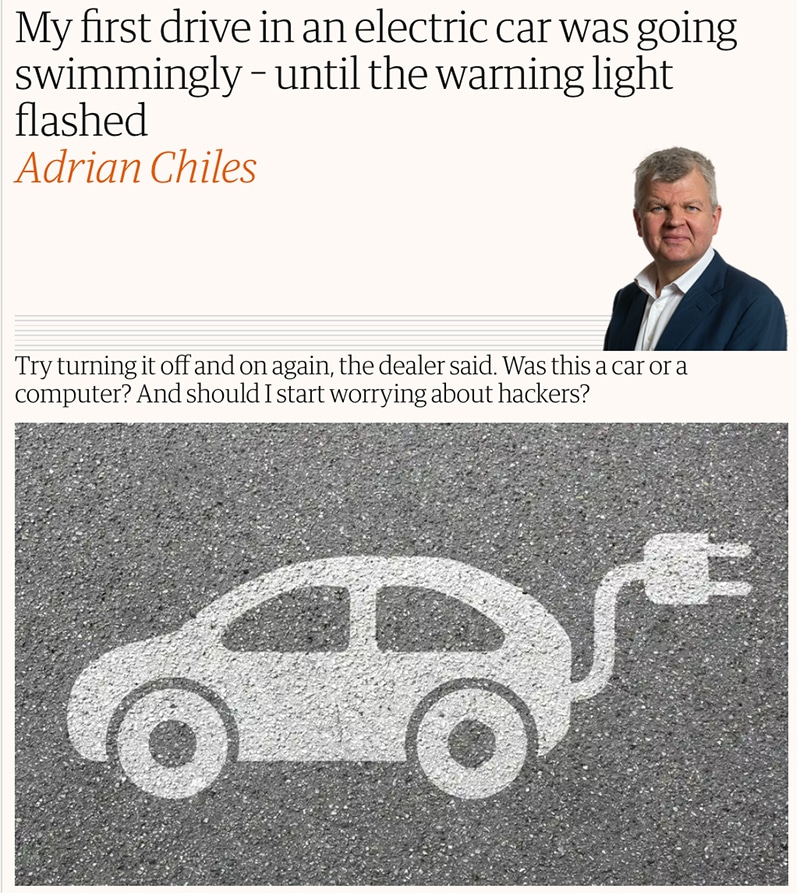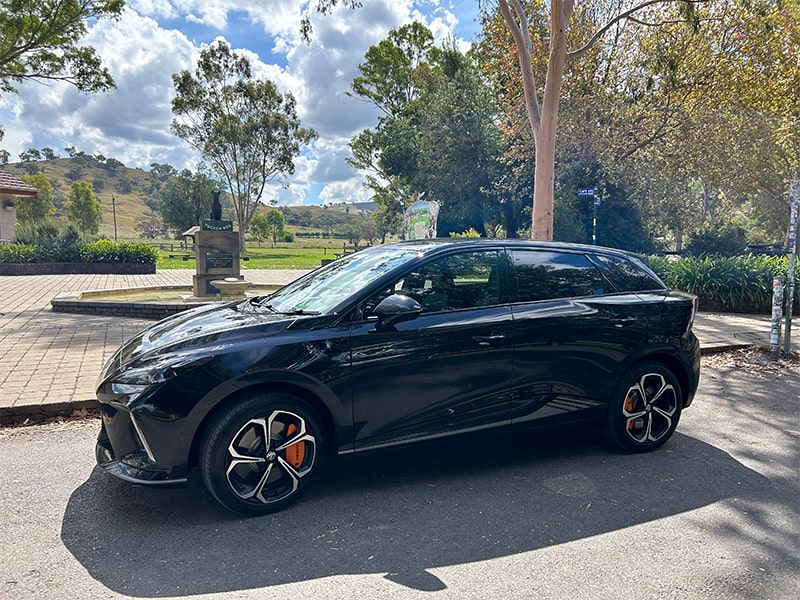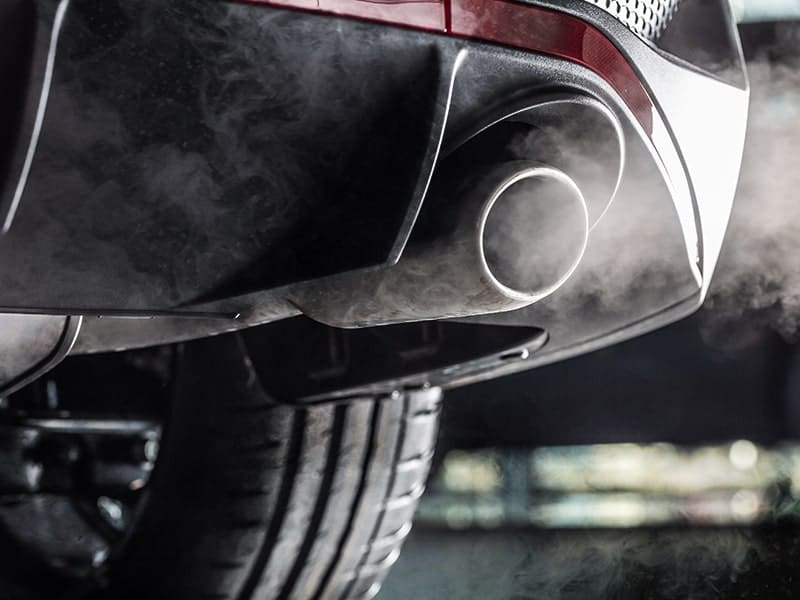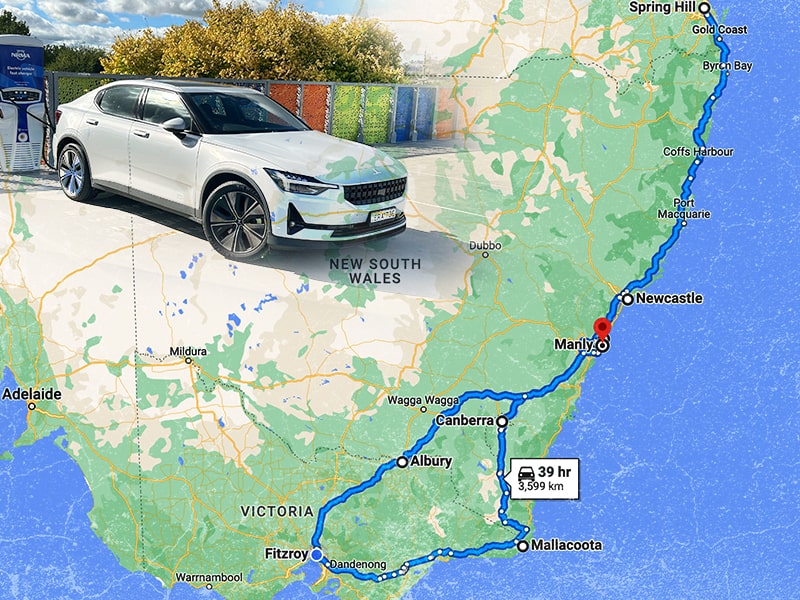
This was inspired by a short article in the UK Guardian published in August 2020. It was written by Adrian Chiles, a British TV presenter. Titled “My first drive in an electric car was going swimmingly – until the warning light flashed.” I thought it worth supplying an alternative view.

I’ve heard mixed reports about combustion cars, so it was with some trepidation that I took delivery of a loan vehicle to try one out. (I plugged my regular car into the home grid and just used it as back up storage.)
The first thing I noticed was this car sat outside my house doing nothing.
Like most people I’m used to utilising a car all the time, either as a transport device or a power source for my house.
This thing just sat there for hours, doing nothing. Not a good start.
I had to go to the shops, a 19 mile round trip, so I got in the car, fastened the seat belt, adjusted the rear view mirror, moved the selection lever to drive, pressed the brake, tried numerous other techniques but ended up sitting in silence.
Nothing happened, again I’m not used to this. When I get in my regular car, as long as I have my phone with me I put it in drive and off I go.
Not in this thing. I need an actual key, a key that goes in an awkward slot I can’t see because it’s hidden behind the steering wheel.
Whose idea was that?
I had to google how to start it.
You have to push in the key into this slot you can’t see and twist.
I was alarmed as the entire machine shook and the noise was terrifying.
It was as if it were a 19th century coalminer having his last coughing fit before the emphysema finished him off.
I was sure something was wrong. Surely no machine would vibrate that much, make that much noise and produce a cloud of dreadful smelling dark smoke before it even moved off.
I followed the instructions on a YouTube video titled “How to drive a manual car,” as best I could.
Push your left foot down on an extra pedal called the clutch. Then, using a big lever between driver and passenger seat, move it into a position that corresponds to an illustration on the top of the lever, all the time holding down the extra pedal.
By this time I was becoming increasingly apprehensive, I carefully studied the instructions and saw that you had to increase the power of the noisy engine by pressing on the throttle pedal, while simultaneously slowly releasing the extra clutch pedal.
This, it was explained, would engage the clutch and send the torque, or turning force of the engine through a long and complex system of gears and transmission shafts, to the rear wheels.
My first attempt was a disaster, the car lurched forward, the entire machine juddered and came to a violent halt, the engine stopped for some reason.
I thought I’d broken it but apparently this was a common problem with learner drivers. I thought back over the 100 years that these cars were in common use and how stressful and dangerous they were.
I say dangerous because a driver would have to remember this absurdly complex series of manoeuvres simply to get the vehicle moving. There is no way you can be in complete and safe control of the vehicle while one hand is manipulating the gear lever.
Once I mastered the moving off from a standstill, I managed, albeit lurchingly, to accelerate the car by constantly and exhaustingly changing gears until I reached a safe cruising speed. Once this was achieved, apart from the endless noise the engine produced, the experience was very similar to driving a normal, electric car.
I was driving along a rural A road (two lane black top) and came up behind a tractor pulling a hay wagon.
I slowed down accordingly by copious use of the brakes, the vehicle had no regenerative breaking and at the time I had not learned how to slow the machine by, as I later learned, downshifting through the gears.
As I slowed to tractor speed the car started to judder rather violently.
By now I had become a little more accustomed to this complex machine. I pushed in the clutch pedal with my left foot and the juddering stopped, but then I was freewheeling and going even slower than the tractor.
I managed to engage a lower gear and, glancing forward I could see the road was clear, I decided to overtake. I had clearly selected the wrong gear as even with my foot hard down on the throttle, the car barely accelerated.
I was alongside the tractor on the wrong side of the road and not gaining ground.
Feverishly I tried to engage a lower gear and allow the engine to respond with more power, I chose first gear and suddenly the car jolted and the scream coming from the engine sounded like a beast in its agonising death throes.
Still no increase in speed, finally I chose third gear and managed to overtake.
Once back on the correct side of the road I noticed a red light on the crude, analogue display I could see before me. I had no idea what it was until I noticed a cartoon style illustration of an early 20th century oil can. The oil light was on.
I didn’t know what it meant but I learned later that I had apparently ‘blown a head gasket’ when I made the engine scream as I tried to overtake the tractor.
This resulted in even more smoke being produced from the exhaust pipe at the rear of the vehicle and would require expensive and complex repairs, meaning the vehicle would be off the road for many days.
As I continued on my perilous journey, I reflected on the many decades that this crude, dirty, noisy and unreliable technology was deemed adequate.
Once back at home I parked the car, then sat in bemusement as although I was stationary and without engaging any gear, the engine was still running. I learned this state is called ‘ticking over’ although I would not describe anything as ticking.
It was rumbling, burning fuel and doing nothing. Apparently, this was considered normal! How I laughed.
I watched another how-to video and understood you had to turn the key you couldn’t see behind the steering wheel and the engine finally couched and shuddered to silence. It was off and now safe to exit the car.
I stood for a moment looking at this car. I could also smell the car and that, I have to tell you, was disgraceful. It produced so much poisonous gas in normal use that clearly the toxins were swirling around the vehicle even after I had turned it off.
For all intents and purposes, it looked very like a normal car, but having had the privilege of first-hand experience driving it, I knew it was a very different beast.
As I walked back into my house I found the mundane sight of my own car sitting being useful, supplying cheap power to our home, very reassuring.










